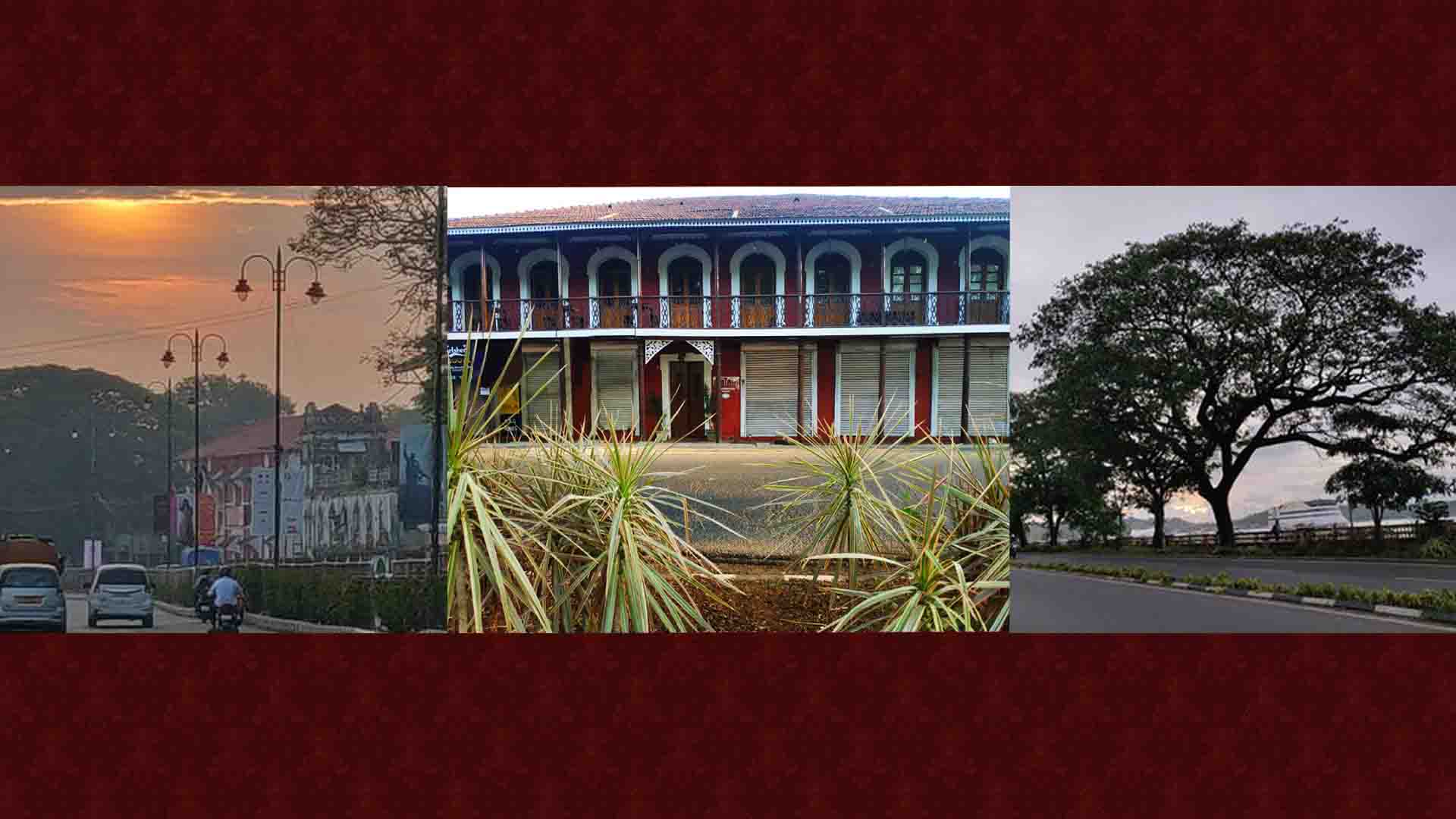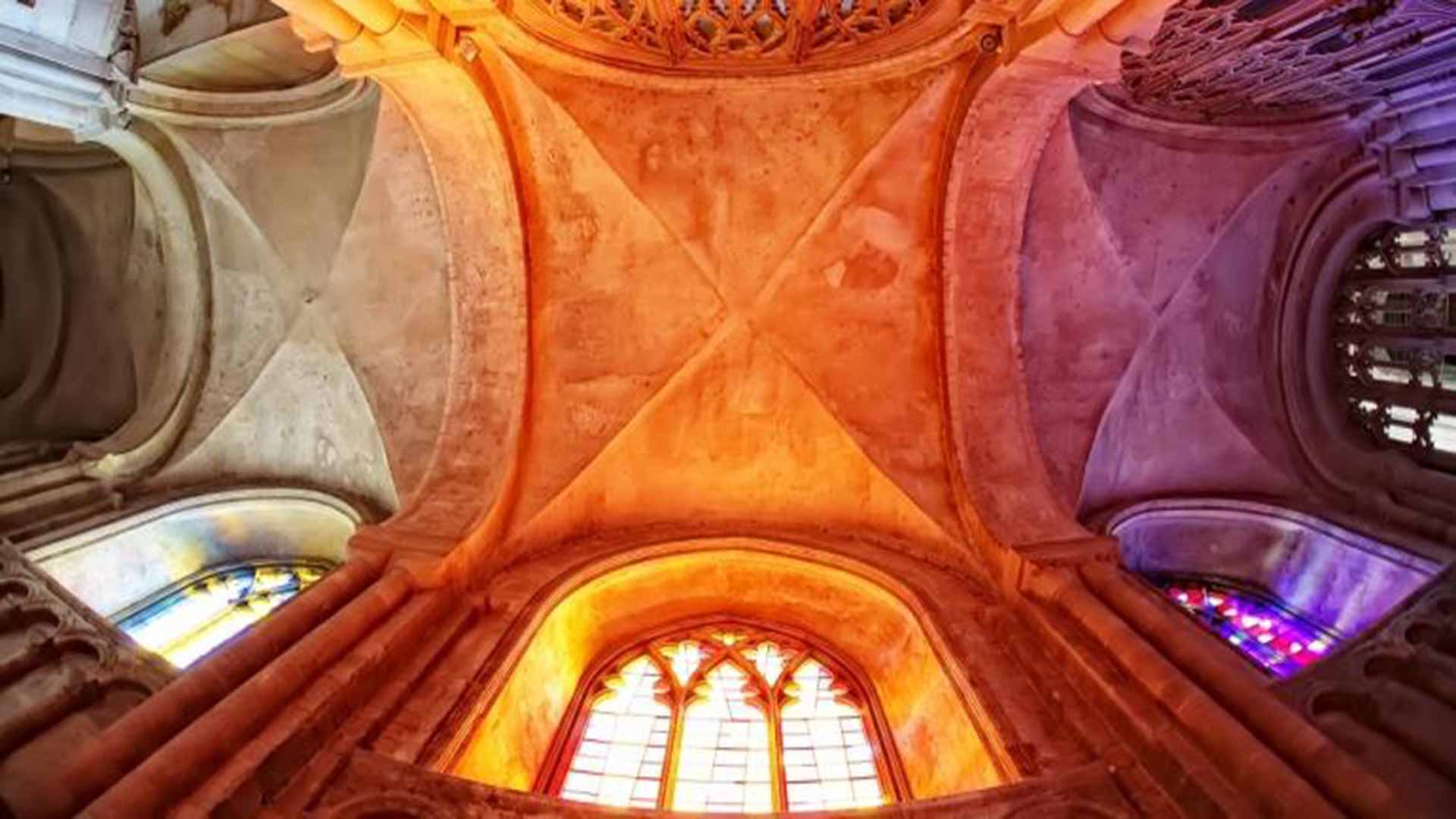Memories of Panjim
In the 1960s and 1970s, Panjim was the picture of calm and sweetness, of simplicity and decorum. The city stretched from Ourém Road up to the Military Hospital in the east-west direction and from the riverine avenue up to Altinho and Batulém in the north-south line. As a garden city on the water’s edge, its rhythm paced by the gentle Mandovi, Panjim had an identity and a charm all its own.
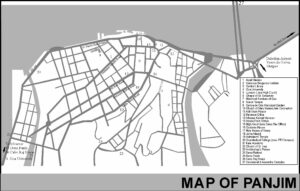
When I was a child, I lived in the heart of Panjim, next door to the centuries-old Adil Shah Palace and under the hypnotic gaze of Abade Faria. My day dawned with the chirping of birds, soon to be followed by the loud siren of the Bombay steamer docking at the Customs pier. The hustle and bustle of the passengers, the clatter of the baggage handlers and the taxis honking on Vasco da Gama Avenue (now Dayanand Bandodkar/DB Marg) roused the 40,000 residents of Panjim still wrapped in sleep, reminding them of their morning tasks, especially of school.
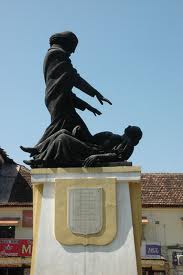
It was now as if the frenzy of the Indian metropolis had disembarked in the Goan capital! The din quickly drifted to the main arteries, Dom João de Castro Avenue and Afonso de Albuquerque Street (now Mahatma Gandhi Road/MG Road), where the bureaucracy and business establishments were situated. Upon the departure of that steamer midmorning, the city regained her composure; she lunched and enjoyed her siesta, and by 4 o'clock resumed her daily battle, which ended around 8 in the evening.
Panjim enjoyed an organic lifestyle only a wee bit different from that of the countryside! Hot bread and fresh fish went door to door; and at the municipal market they sold local produce from villages nearby. But it wasn’t only about what the people bought; it was equally about what they thought – about how they treated one another and the surroundings. They displayed civic sense and were a God-fearing lot. That church, mosque and temple were practically on the same street spoke volumes of communal peace and harmony in the city.
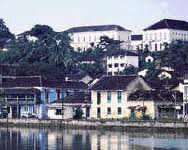
A Japanese writer once labelled Panjim the ‘most unIndian of all Indian cities.’ In his mind’s eye he probably saw an urban landscape devoid of skyscrapers, filth, and chaos. But had he perhaps noted the spiritual architecture of the citizenry? Panjimites were not caught up in a rat race; they lived modestly and contentedly, fearing none, much less the police, a ramshackle force anyway! Burglary was rare, and murder or suicide almost unheard of. Conscience and benevolence – or better, munisponn (humanity, in Konkani) – reigned. In the words of a fado (Portuguese folk song): ‘If someone humbly knocked at our door, they would sit with us at table; and even in the poor comfort of our home, we had loads of affection to offer.’ In short, the townsman didn’t need much to brighten his existence.
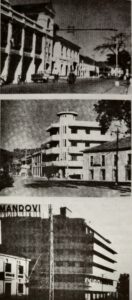 Panjim was all things to all people: a nature lover’s dream, a pedestrian’s delight, a balm for a troubled mind. There were open spaces and colonnaded footpaths. Traffic was simple and light – motorcycles, bicycles, even bullock carts, and automobiles ranging from the popular Volkswagen to the luxurious Cadillac. These were the last of the Mohicans that had emerged, quite paradoxically, from the Economic Blockade; in a way, they denoted the Goan cosmopolitanism.
Panjim was all things to all people: a nature lover’s dream, a pedestrian’s delight, a balm for a troubled mind. There were open spaces and colonnaded footpaths. Traffic was simple and light – motorcycles, bicycles, even bullock carts, and automobiles ranging from the popular Volkswagen to the luxurious Cadillac. These were the last of the Mohicans that had emerged, quite paradoxically, from the Economic Blockade; in a way, they denoted the Goan cosmopolitanism.
Panjim was unique; it prided itself on single items: on one daily in Portuguese (O Heraldo) and in English (The Navhind Times); on a radio station (All India Radio) and a music academy (Academia de Música) which had nowhere to hold its annual concert other than at the only public hall (Institute Menezes Bragança). Likewise, Panjim was proud of its one and only three-star hotel (the Mandovi), of its ice-cream shop (Eskimo), and its South Indian restaurant (Shanbhag). Just one cine-theatre (Nacional), one bookstore (Singbal), and one public library (Central) catered to its citizens. For their healthcare needs, they went to the medical college hospital (Escola Médica). Panjim’s children depended on one public ground and football stadium (at Campal) and its adults on their Hyde Park (Azad Maidan) to go to yell their guts out. And children and adults alike enjoyed the evening breeze at the municipal garden (Garcia de Orta).
The quiet beauty of that public garden, the city’s oldest and largest, is etched on my memory: as kids, we jumped there with excitement while our elders bantered back and forth, comfortably seated on self-appointed, gender-segregated benches. From the bandstand, where the navy orchestra and others performed occasionally, I remember naively shouting slogans (“Tujem mot konnank? – Don Panank!”) in the runup to the Opinion Poll in 1967! There were cafés and bars, taverns and little gaming houses thereabouts; and some distressing sounds of tu-tu-main-main at a nearby newspaper office always wafted into the garden. None of this must have ever solved the city’s problems of scarcity and costliness, of poverty and drunkenness! The latter two could be starkly seen in a fringe area dubbed Tambddi Mati (Red Earth), thanks to its untarred alleys and the little red lights on its porches.
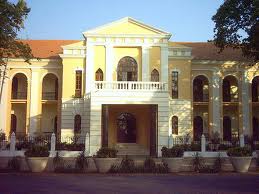
Panjim, therefore, was no garden of virtues. Its relative insularity had prompted me to leave for a city abroad – I was peeved about being everybody's business – until I changed my mind fearing that, meanwhile, my city would become another Mumbai – like nobody’s business! At any rate, the city had already started to expand westward into Miramar and Dona Paula while apartment blocks were quietly replacing houses in the city centre. There was a bridge on the Mandovi and a bus stand in the middle of the Pattó marsh; on the other hand, the sewer network lay incomplete, power outages were common, and piped water was restricted. Pure air was no doubt a saving grace; but then again, in the rains, Panjim would suddenly become Venice!
Panjim was petite, yet many of its sites stayed put on my bucket list. The stairways to Alto dos Pilotos and Escadinhas de Pedras Soltas resembled picture-postcard Lisbon – except for their state of disrepair. The likes of Saraswati Mandir, a library from the post-Republican days, were dimly lit and crowded. And while Tribunal da Relação (High Court) was a charming building adjacent to my house, I never visited it, petrified as I was by the magistrates’ stern faces. In much the same way, I was awed by the Arquivo Histórico (State Archives), but its documents half a millennium old were an ocean that my little bucket could not hold.
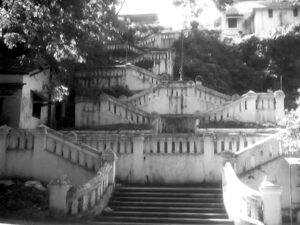
Who can ever forget the five-block Lyceum complex at Alto de Guimarães? Seniors told me that it was once reminiscent of the millennial Portuguese university town of Coimbra; but alas, the spirit had moved – only the shell remained. Worse was the fate of the Senado de Goa (municipal chamber), a distinctive building with a clock tower and hemmed in by gardens; it was torn down on flimsy grounds, so all that one can see now is a gaping space. What’s worse, the city never again got a town hall to match. These and some other facets were thus beyond my little self.
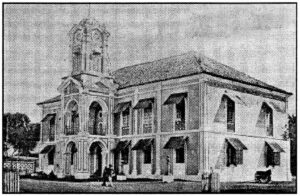
Even so, I eventually came to love and identify myself with the city. People of different creeds lived here in mutual respect. And as though time and tide waited for ever, they happily stopped in their tracks to exchange pleasantries – not to forget that men took off their hats to ladies without ado! Time was when baptisms, birthdays, and funerals were major events; and in those pre-television days, a stroll on Miramar beach at sunset, or a ride to Campal on goddia-gaddi (horse carriage) was all it took to dispel the ennui.
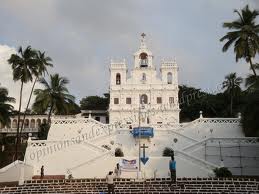
The rest of the magic was left to the cultural calendar to pull off. The Carnival parade, the street dances at clubs Nacional and Vasco da Gama, and the annual quermesse (open-air fair) at Fontaínhas were eagerly awaited. The Way of the Cross wending its way from the iconic Church of the Immaculate Conception up to Paço Patriarcal (Archbishop’s Palace) at Lent; the candle procession streaming the other way around, in October; Christmas celebrations et al were sights to behold. Holi, Ganesh and Diwali brought in traditional delicacies from Hindu friends. And all of this contributed towards a sweet spirit and the joy of living in Panjim.
Forty years on, Panjim is an entertainment hub – one big casino, garish, noisy and manic – which the Covid-19 virus briefly disrupted as only Covid can. The ensuing lull, however, helped me uncover the face of my city. I began to feel a homesickness for that time in the past when we faced shortages of sorts while the world seemed to be enjoying abundant life. Today, this newfound calm and sweetness, simplicity, and decorum make me feel we were never short of anything. No wonder Panjim was the apple of the eye of every Goan worth his salt!
(First published in The Peacock Quarterly, Panjim, July 2022. Reprinted by The Goan Review, Jan-June 2023 https://online.fliphtml5.com/cmlao/eron/?1681654486031
Notes
Abade Faria, or Abbé Faria, refers to the Goan priest José Custódio de Faria (1756-1819) celebrated as ‘Father of Hypnotism’. A statue depicting him in the act of hypnotising a lady was erected in 1956.
Academia de Música (1952), now Kala Academy, was the first professional music academy in Goa, set up under the baton of Europe-trained maestro António de Figueiredo.
Adil Shah Palace was the official residence of the Portuguese viceroy/governor-general (1759-1918). It continued as the seat of government and housed the legislature (pre- and post-1961). An apt extension was built in 1970. The palace is now a museum.
Alto dos Pilotos and Escadinhas de Pedras Soltas (literally, ‘Pilots’ Height’ and ‘Loose Stone Stairs’, respectively) are two of Panjim’s many stairways. The former is located behind Fazenda (Revenue Office) building and the latter in Fontaínhas/Mala ward.
Arquivo Histórico (1595) was first curated by Diogo do Couto, co-author of Décadas, an official history of the Portuguese in Asia and Africa.
Azad Maidan, formerly Praça Afonso de Albuquerque, had a monument to the Portuguese conqueror; now rededicated to Tristão Bragança Cunha, the ‘Father of Goan Nationalism’. A Martyrs’ Memorial was added in the 1970s.
Bombay steamer was a coastal service between Goa and Bombay. Several companies ran it for a century beginning from the last quarter of the 19th century.
Campal, meaning ‘a clearing’, is the area originally developed by viceroy Dom Manuel de Portugal e Castro (1827-1835).
Central Library began as Pública Livraria (1832) and was attached to Instituto Vasco da Gama (1925-1959). Renamed Central Library in post-1961 Goa, it is now housed in a state-of-the-art building at Patto Plaza.
Church of Our Lady of the Immaculate Conception is an iconic structure overlooking the city.
Clubs Nacional and Vasco da Gama were established in the early 20th century, the former largely sponsored by natives and the latter by Panjim-based continental Portuguese.
Economic Blockade (1954-56) imposed by the Indian Union prompted then Portuguese Goa to accelerate agricultural development, import of goods (including automobiles), and start direct flights (Goa-Lisbon-Goa, via Karachi).
Escola Médica, short for Escola Médico-Cirúrgica de Goa (1842), was Asia’s first medical school. Located at the Palace of the Maquinezes, it added a hospital building in 1927, now the headquarters of Entertainment Society of Goa (ESG). It was renamed Goa Medical College in the 1960s and shifted to Rajiv Gandhi Medical Complex, Bambolim, in the 1990s.
Garcia de Orta Garden is named after the Portuguese Jewish botanist and author of the seminal Colóquios dos Simples e Drogas da Índia (1563). He owned an estate in the old Goan capital and had the island of Mumbai on lease from the king of Portugal.
Menezes Bragança Institute, formerly Instituto Vasco da Gama (1871-1963), is regarded as one of Goa’s finest cultural institutions.
O Heraldo, founded by Messias Gomes, in 1900, was the first daily published from the Portuguese colonies; now Herald, published almost exclusively in English, since 1983.
Opinion Poll, the first of its kind in India, was held to ascertain the wishes of the then Union Territory of Goa on the proposed merger with Maharashtra. The popular, anti-merger slogan meant: ‘Your vote?’ – ‘For Two Leaves, for sure!’
Paço Patriarcal, or Patriarchal Palace, is the official residence of the Archbishop of Goa and Daman, who holds the title ‘Patriarch of the East Indies’.
Saraswati Mandir, on 18th June Road, is one of the many libraries set up by Hindu trusts in the new era of political and religious freedom under the Portuguese Republic (1910).
Senado de Goa (1511) was set up on the lines of the municipal senate of Lisbon.
The Navhind Times, founded in 1962 by mining magnate Vasantrao Dempo, is the first English-language daily to be published from Goa.
Tribunal da Relação (1544), had jurisdiction over the Portuguese Eastern Empire (Africa to Japan). It was downgraded to a Judicial Commissioner’s Court under the Indian Union and became a Bench of the Bombay High Court in 1982.
Lent, an irresistible balm for the soul
Haven’t we felt listless, not to say ill at ease, about Lent, sometime in our life? As a child, I tagged along with my parents to liturgical services that made little sense. Not surprisingly, on reaching the age of reason, I had to be cajoled into attending them. Then, suddenly, I got a break. I found motets, songs for the season, composed by Goa’s unnamed musicians of old, to be an absolute feast for the ears, alongside similar compositions by Bach, Palestrina and Mozart. I also discovered, quite ironically, that the Via Dolorosa in the balmy evening breeze and to the chirping of birds in the woods of Altinho was not so dolorous after all!
Much as I delighted in those two little secrets, at one point I felt an interior dryness, a sense of futility, as though I were trudging a wasteland. The saving grace came from my grandmother’s exemplary life, which was far better than precept. Likewise, my parents’ quiet commitment to the Faith, amidst their daily toil and moil, provided important insights into the valley of tears we live in. And Scripture wrapped it up so beautifully: “Look at the birds of the air: they neither sow nor reap nor gather into barns, and yet your heavenly Father feeds them. Are you not of more value than they?” (Mt. 6: 26)
Clearly, the rituals that I had cheekily dismissed yesterday changed into victuals for the spirit today. And as another season of Lent comes round, I know just how it will turn out, how they will sustain me…. Beginning Ash Wednesday, I will go to church more often than usual, for Mass and Stations of the Cross. On a hopefully bright and festive Palm Sunday morning, I will feel cheery. Yet, by evening, my mood will change hugely – as it always did when I witnessed the spectacle of the full-size statue of the Suffering Lord emerge from the immaculately white church of the zigzag stairway, to join the faithful clad in dark shades, in a penitential procession through the streets of the capital.
What a poignant start to the Holy Week! It’s the last lap of an all-embracing spiritual journey. You’ll probably catch me shaking off distractions on holy Monday, Tuesday and Wednesday. Through the rest of the week, I will be all eyes and ears to the Mystery of mysteries replayed in the Paschal Triduum, from the moment of that bittersweet Last Supper on Maundy Thursday through excruciating Good Friday and triumphant Easter Sunday. Soon, the week’s darkness will give way to light and its drabness will translate into loud proclamations. The faithful will be beside themselves, singing in an unending refrain: “No one can give to me that peace that my Risen Lord, my Risen King can give.”
It pays to be fools for Christ; Chesterton’s “Donkey” is proof that there will be no regrets. The thought of self-privation, which had bugged me when young, doesn’t assail me. I find it easier now to give up a favourite food or a much-loved pastime. Penance and sacrifice, besides fostering self-discipline and tempering our desires, are game-changers. They help to boost one’s spiritual life and improve our physical health. We are led to find ways and means to step up our knowledge of our faith; perform acts of kindness and mercy, wherever we may be; pray for others, and clean ourselves inside out by means of a holy confession. Before long, we learn to slow down, while the rest of the world is in a rat race, enjoying in a fool’s paradise.
It is reassuring to think of Lent as pilgrimage toward the profound mystery of the passion, death and resurrection of Jesus Christ. Benedict XVI says it is also “a privileged time of interior pilgrimage toward Him who is the fount of mercy. It is a pilgrimage in which He himself accompanies us through the desert of our poverty, sustaining us on our way toward the intense joy of Easter.” How, then, can we be listless or ill at ease at Lent when an irresistible balm for our soul is at hand?
(First published in The Times of India, Panjim, 1 March 2017)
